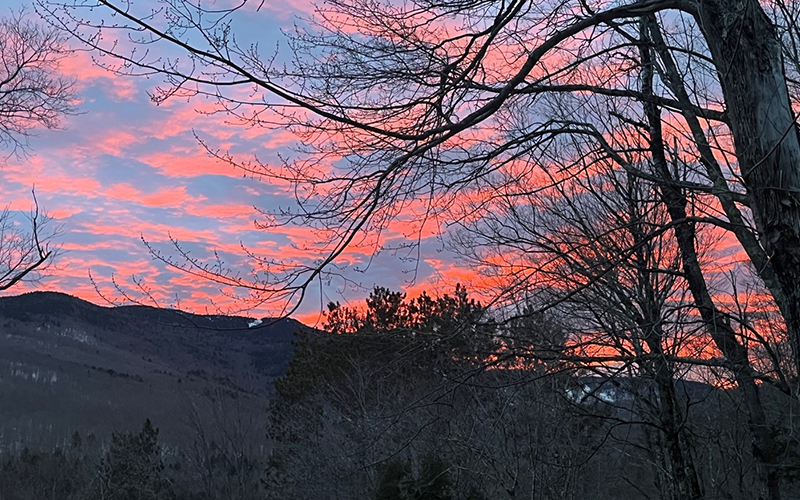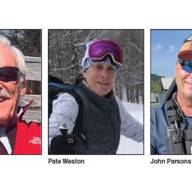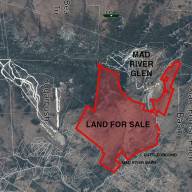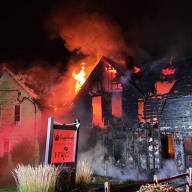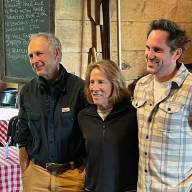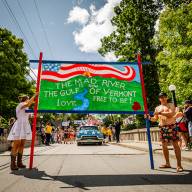“I’ve learned that people will forget what you said, people will forget what you did, but people will never forget how you made them feel.” I often think of these words attributed to Maya Angelou. A feeling can be more powerful than words or actions. I believe the same is true for places. We remember places for how they make us feel.
Some souls are fortunate enough to be born into the place that is meant for them. Like a native plant comfortable in its soil, they thrive, they blossom, they grow, they flourish. This soul finds its life work, purpose, or dharma with little drive to travel elsewhere. And then there are the souls who are born in their happy place but sadly need to live decades elsewhere knowing that and yearning for the day to return home. I recall a close friend who grew up in Maine and spent his entire career working for one company in Delaware. Most of his colleagues knew that he would eventually move back to Maine. At his retirement party, one of those colleagues asked when he and his wife were doing so. “In about an hour,” he replied. “The van is packed and parked outside.”
For me that journey of finding where I was meant to be began with day trips skiing on the Connecticut hills not far from where I spent my childhood. In my early 20s that journey continued while on a rafting trip in Utah where my soul and mind had sort of a ‘great awakening.’ A few decades and a few pivots later, I am fortunate to be calling this special Valley home.
I first came to The Valley early in 1980s in the days of Gallagher’s and Mooselips. The skiing was good and, yes, so was the nightlife. I knew then that there was something also very special about this place. I wanted to return. Life took over, however, and about 20 years later I finally did return at least on a part-time basis. With my husband and a blended family, a new career, lots of skis, a minivan, and a yearning, I began to understand what it was about this place that touched me so profoundly.
Late on Friday afternoons our Massachusetts home was abuzz with chaos. The dining room was designated the staging area – a place to get organized. Each of the four kids had their own canvas bags for gear and well-worn duffels sporting logos of whatever else they were into. The dining room table was permanently covered with unfolded laundry waiting to be sifted through. “Go shop in the dining room,” was my standard reply when one of them asked, “Where is my. . .?”
By 7 p.m., after much of the Boston area traffic had abated, the van was packed to the ceiling with barely space for four kids, two adults and fur and feathered pets. The oldest of the four teens with the longest legs often received priority seating but not without much grumbling. On the way out of town, we made a quick stop at the local sub shop for our regular takeout order, plenty of napkins please, and we were on our way. Most of these rides were as you would expect with four teens but what I remember the most was the palpable feeling of ease and release as we crossed the Connecticut River into Vermont. I exhaled. My blood pressure dropped. My shoulders relaxed and if I was driving, so did my grip on the steering wheel. Our teens could say or do almost anything and all would be fine. What was this all about? I wondered.
The weekends flew by in the cozy ski chalet. Days were filled with fresh mountain air, the beauty of snow and ice-covered peaks, and catching up with the kids about their lives around the warm fire as we relived the adventures of the day on the slopes. Sadly, the packing up and driving away from The Valley in the parade of out-of-state vehicles on Sunday afternoons was heartbreaking. Thoughts of my upcoming work week tried to steal into my mind but on good days, I could shut them out at least until the New Hampshire border. This was the winter routine for many years but each week I looked forward to Friday afternoons as I knew I physically and mentally needed to go back.
As the four kids peeled away from home and into lives of their own, trips to the ski house became more relaxed and enjoyable in a different way. My husband and I spent more time here year-round. I recognized that this was a place where I could think, and I felt the space to create. We met more people -- some locals, some transplants like us, as well as part-timers – all unique individuals with fascinating stories to tell. We all had in common a deep love for this place. From the bartender who poured our favorite drinks before we even sat down, to the neighbor who offered the latest news of our little hollow, these folks became our friends. We enjoyed listening to the remarkable history of The Valley and its inevitable but careful development. We paid more attention to the sounds of the birds and the uniqueness of plants that thrived in the mountain climate. We biked on dirt roads passing farms, stopping to chat with farmers. We adjusted to the varying rhythms of the seasons enjoying the elements of all. We hiked local woodlands and enjoyed learning about the wonder of early spring ephemerals and variety of ferns. On our drives back to Massachusetts, we always planned our next return.
Finally, three years ago, we made this special Valley our full-time home. When I am watching the clouds billow over the ridge, and drift down to The Valley, I think the magic is in the breathtaking views and spectacular scenery. When I visit the local farm stands and pick my own veggies, often paying by the honor system, I think it must be the fresh produce. Or maybe it is the self-sufficient nature of so many folks. The iconic Fourth of July parade makes me believe that for sure it is the characters, sense of community and independent spirit. The talented writers and artists are always willing to share their gifts. Perhaps that is what makes The Valley special. In my heart I am beyond grateful for the feeling I get from the sum of all these parts.
Contact


